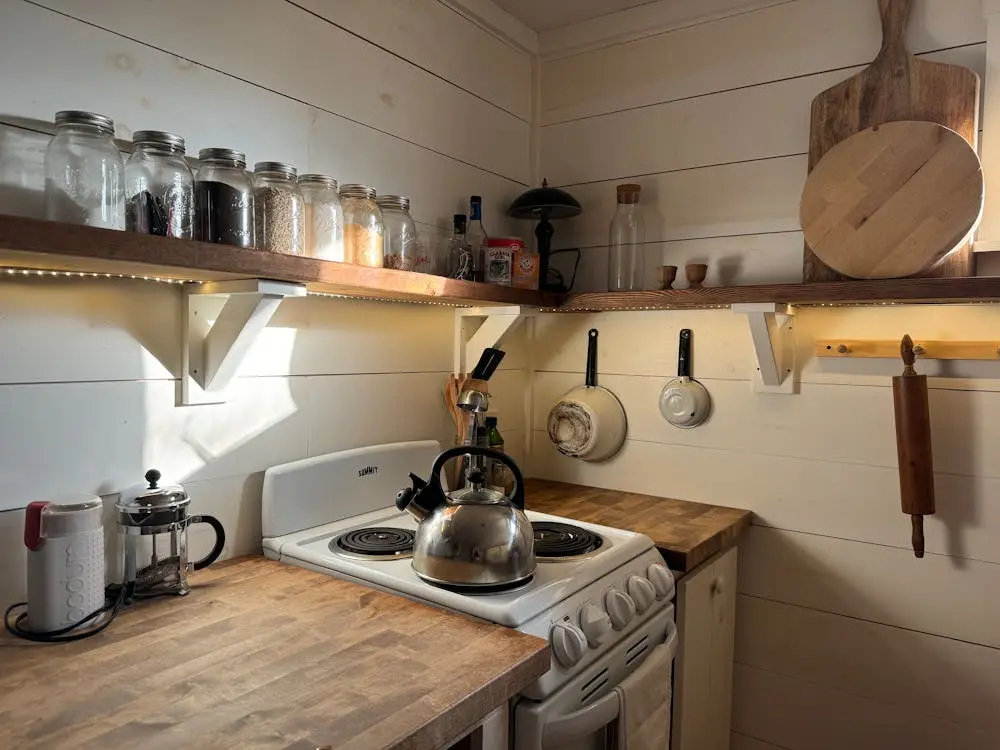Your kitchen isn’t just a place where meals are prepared—it’s the heart of your home, a space where functionality meets comfort and style. Designing your dream kitchen involves more than just choosing cabinets and countertops; it’s about creating a space that enhances your lifestyle and reflects your personality. Whether you’re an avid chef, a busy parent, or a social butterfly, here are some expert tips and unique insights to inspire your kitchen design journey.
1. Functionality First, Form Follows
“The most beautiful kitchens are also the most functional. Consider your cooking style and daily routine when designing your dream kitchen.” – Daniella Woolf, Architect
When planning your kitchen layout, prioritize functionality. Think about how you move around the space while cooking and entertaining. For example, placing the stove, sink, and refrigerator in a triangular layout—known as the kitchen work triangle—can optimize efficiency. This layout minimizes unnecessary steps and enhances workflow, making meal preparation smoother and more enjoyable.
2. Embrace Your Personal Style
“Your dream kitchen should reflect your personality and style. Don’t be afraid to experiment with unique design elements that make it special.” – Justina Blakeney, Interior Designer
Injecting your personal style into the design transforms your kitchen into a reflection of who you are. Whether you prefer sleek modern lines, rustic farmhouse charm, or vibrant eclectic touches, incorporate elements that resonate with you. Consider bold color schemes, textured materials, or even statement pieces of artwork to infuse personality into the space.
3. Prioritize the Gathering Space
“The kitchen is the heart of the home. Design a space that encourages connection and conversation, whether it’s a large island or a cozy breakfast nook.” – Emily Henderson, Interior Designer
Create a focal point that encourages social interaction. Islands with seating, breakfast bars, or cozy nooks with built-in banquettes are perfect for bringing family and guests together. These spaces not only serve as dining areas but also facilitate casual conversations and bonding over meals, enhancing the warmth and liveliness of your kitchen.
4. Let There Be Light
“Natural light is essential in the kitchen. Maximize windows and consider strategic lighting to create a pleasant and functional workspace.” – Joanna Gaines, Designer
Lighting plays a crucial role in kitchen design, affecting both aesthetics and functionality. Maximize natural light by strategically placing windows and opting for light-filtering treatments. Supplement with layered artificial lighting—ambient, task, and accent lighting—to illuminate workspaces and create ambiance. Well-lit kitchens feel more inviting and spacious, enhancing both cooking efficiency and overall comfort.
5. Storage Solutions: Keep It Clutter-Free
“A well-organized kitchen is a joy to cook in. Invest in smart storage solutions that keep your space clutter-free and functional.” – Peter Walsh, Professional Organizer
Effective storage is key to maintaining a tidy kitchen. Consider cabinets with pull-out drawers, lazy Susans for corner spaces, and vertical dividers for baking sheets and trays. Customize storage solutions to accommodate your cookware, utensils, and pantry items, ensuring everything has its designated place. A clutter-free kitchen not only looks more appealing but also supports efficient meal preparation and cleanup.
6. Pay Attention to Details
“The details matter! Finishing touches like cabinet hardware, light fixtures, and backsplashes can elevate your dream kitchen and make it truly unique.” – Nate Berkus, Interior Designer
Small details can make a big impact on your kitchen’s aesthetics. Choose cabinet hardware that complements your style—whether sleek and modern or ornate and vintage. Select backsplash tiles that add texture and personality, and opt for statement light fixtures that serve as functional art pieces. These details tie the design together, adding depth and character to your dream kitchen.
Insights from Studies
Studies highlight the profound impact of kitchen design on daily life and wellbeing:
- Meal Planning and Healthier Choices: Well-designed kitchens encourage meal planning and healthier eating habits, enhancing overall nutrition and wellness (Source: Journal of the Academy of Nutrition and Dietetics).
- Family Dynamics: Functional kitchens promote more frequent family meals, strengthening relationships and fostering a sense of togetherness (Source: Housing Studies).
- Mental Wellbeing: Cluttered or poorly designed kitchens can contribute to stress and anxiety, emphasizing the importance of a well-organized and calming space (Source: University of Minnesota).
- Biophilic Design: Incorporating natural elements like light and plants can create a soothing environment, enhancing both physical and mental wellbeing in the kitchen (Source: ArchDaily).
In conclusion, designing your dream kitchen goes beyond aesthetics—it’s about creating a space that enhances functionality, reflects your personality, and promotes wellbeing. By prioritizing functionality, embracing personal style, and integrating expert insights, you can transform your kitchen into the heart of your home—a place where cooking, dining, and connecting flourish effortlessly.





